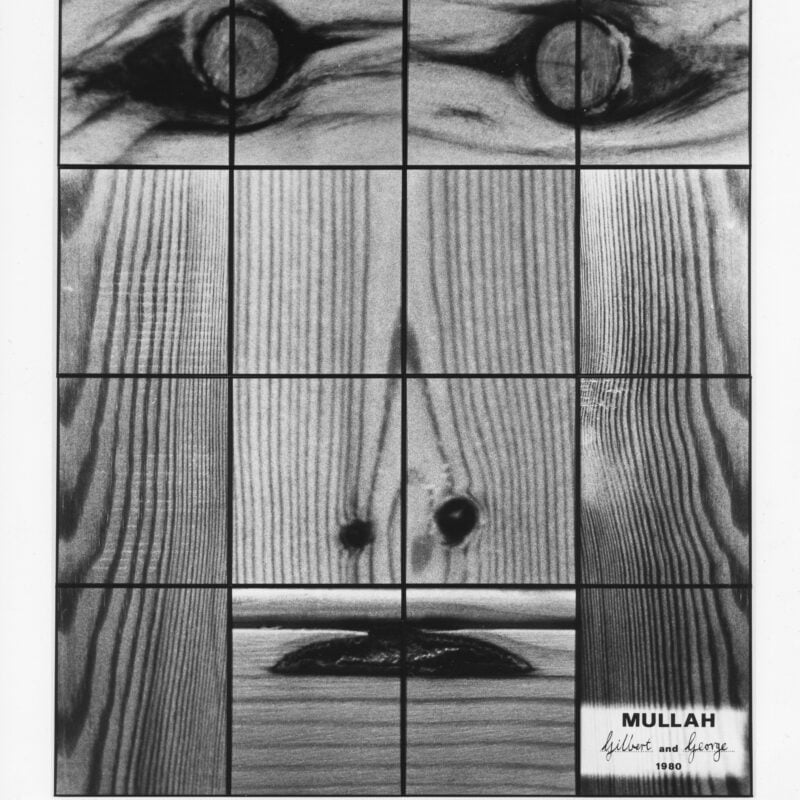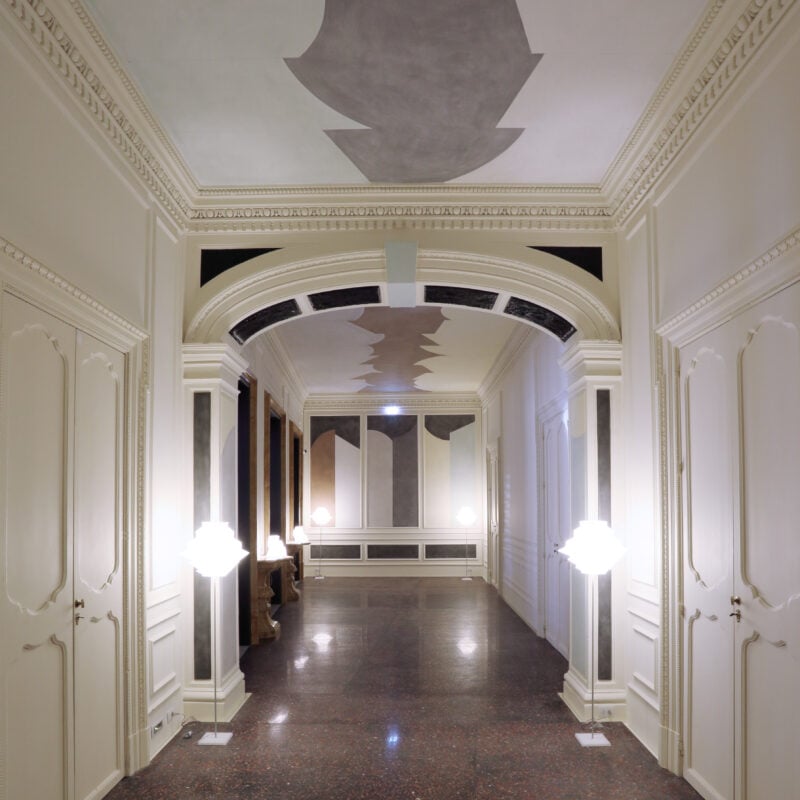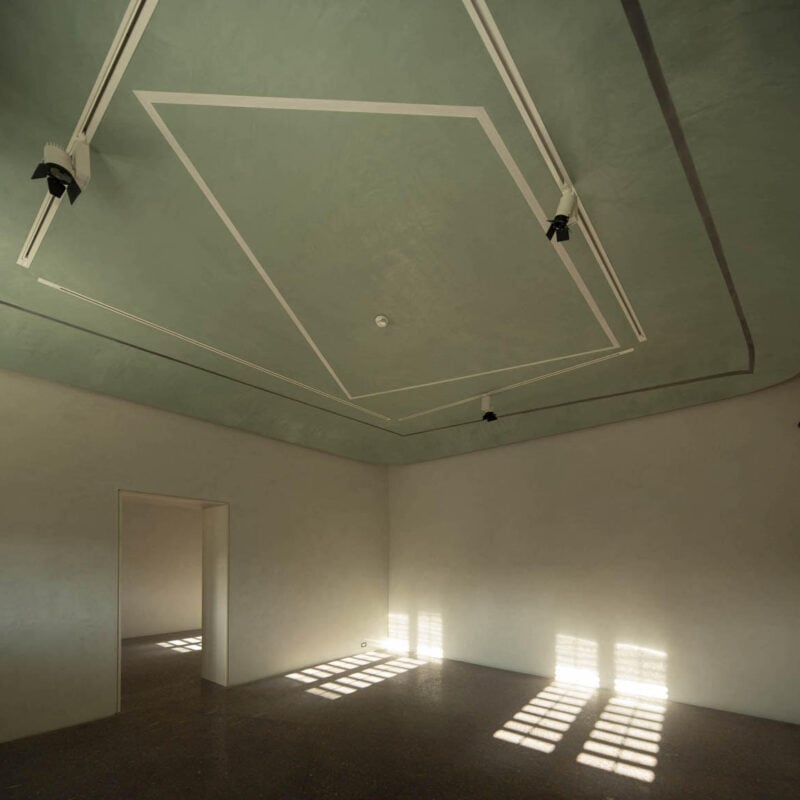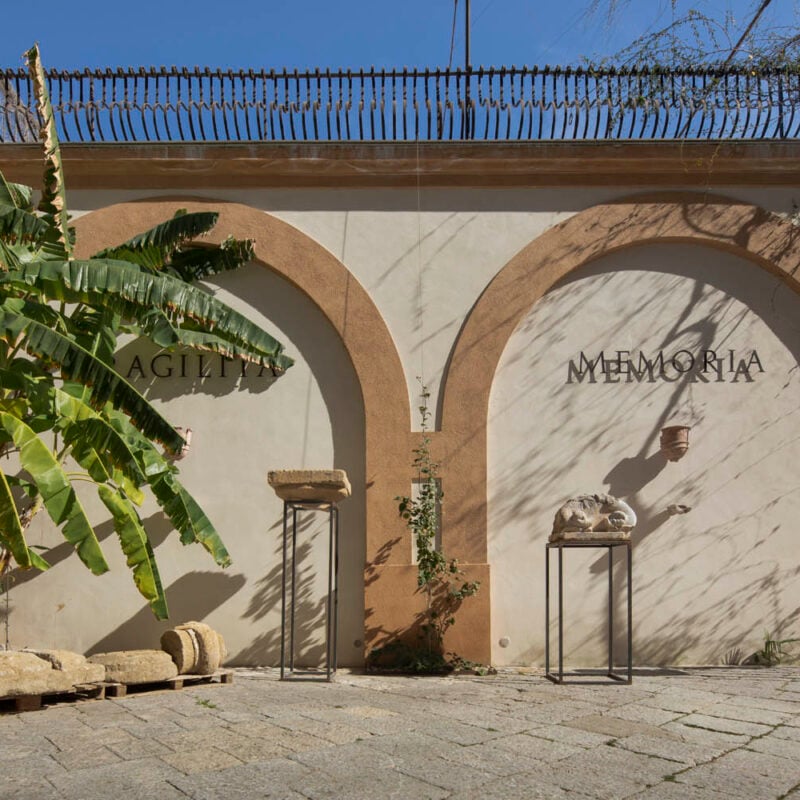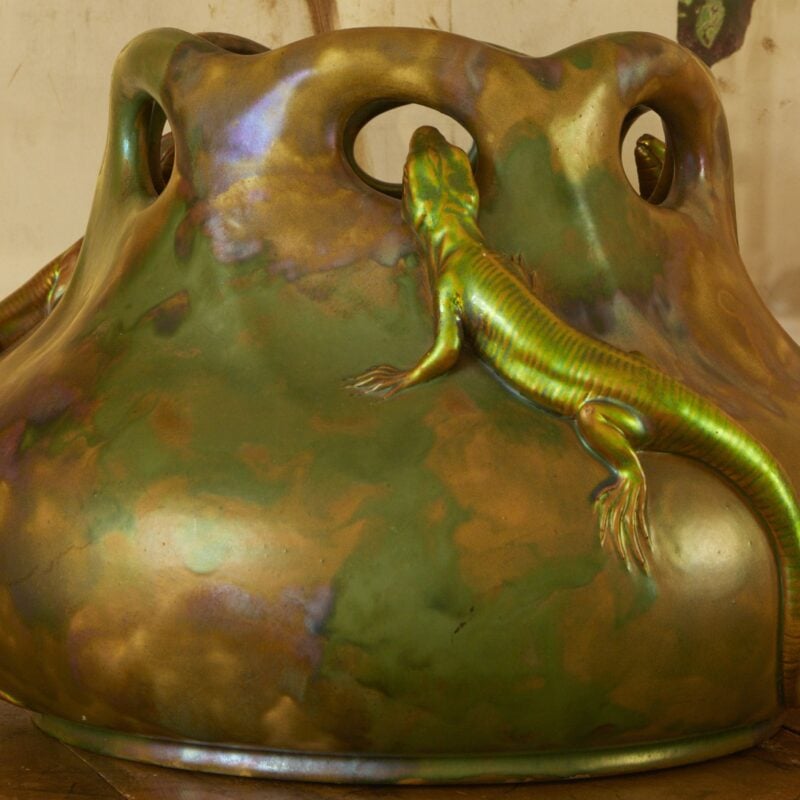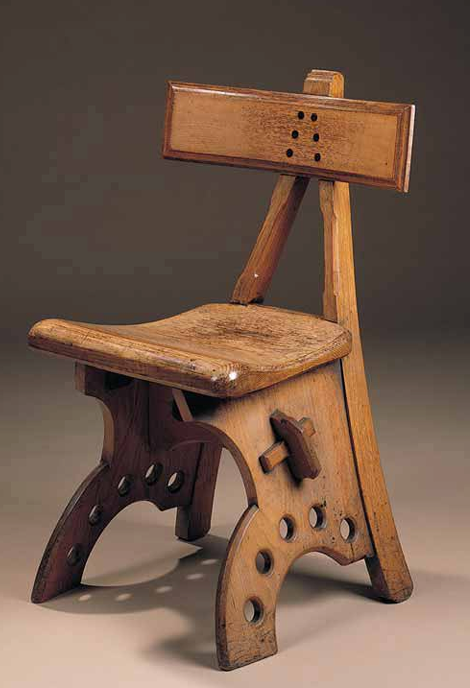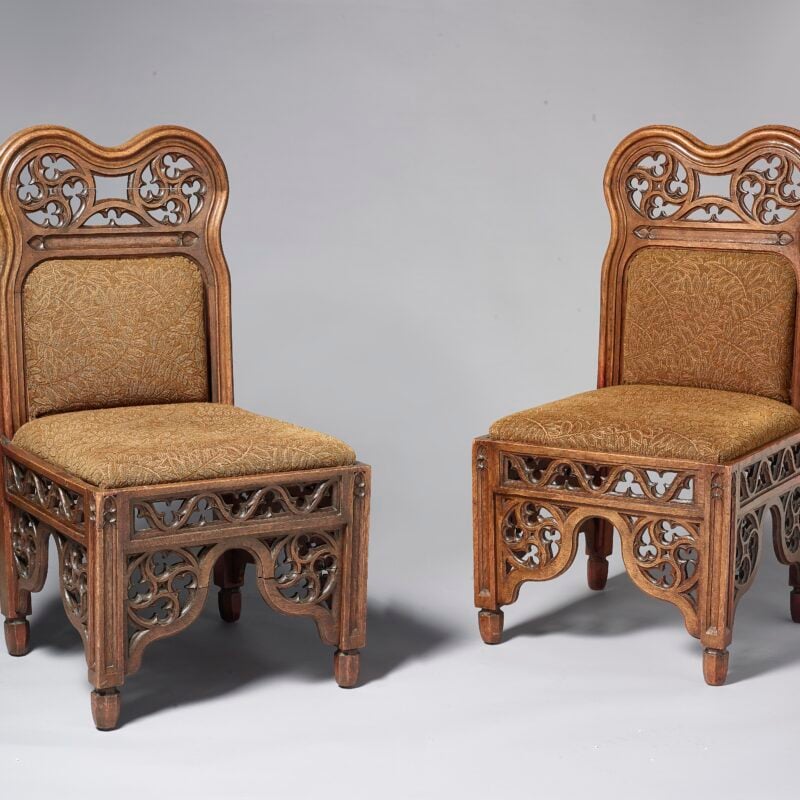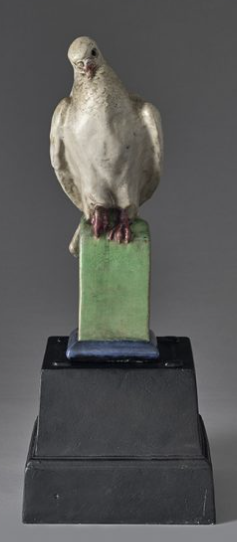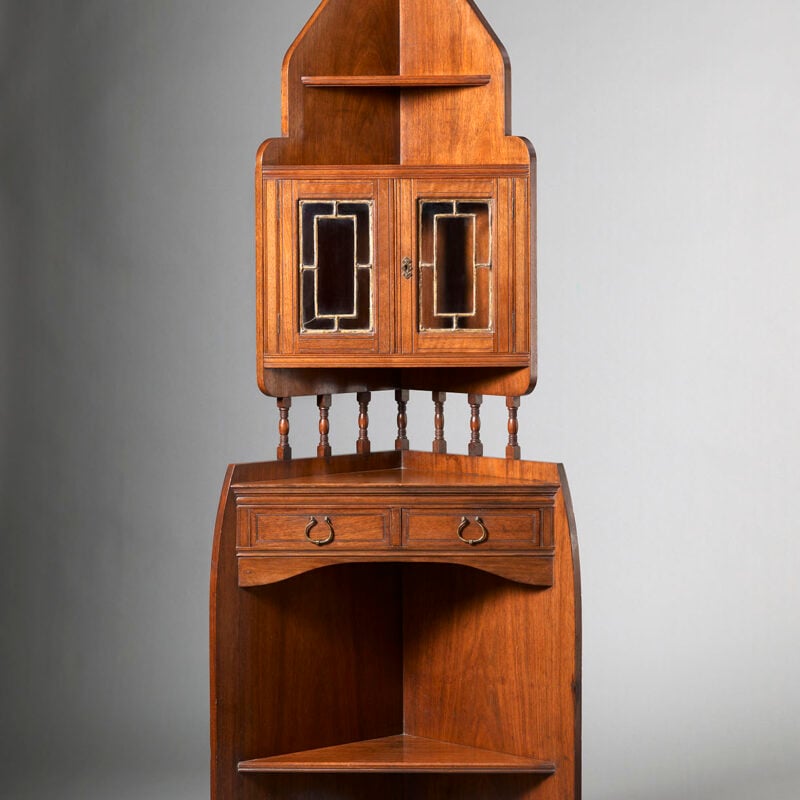MORE INFORMATIONS
Dimensions
134,6 x 67,3 cm
Technique
Pencil, watercolors and touches of white
Description
The choice of theme is easily understood when put in relation to the biographical story of the patron and the artist himself. The two are bound by a sincere relationship of friendship, even before mutual esteem. Burne-Jones recognizes in Ruskin a father figure, with whom to compare himself above all on an artistic level. Ruskin finds in classical culture the best vehicle for communicating the image of an ideal world, and even more so in the theme of women heroines, worthy interpreters of the values to which one aspires.
The protagonist of the drawing is Philomela, sister of Progne: the latter has married Tereus, a belligerent lord of Thrace, who is reunited with his wife after five years apart. Philomela suffers the pitfalls of her brother-in-law Tereus, who, after abusing her, cuts out her tongue so that she cannot accuse him. Philomela then uses textile art to tell her story. In Burne-Jones’ drawing, she points to her lips to emphasize the loss of speech and clasps a tapestry in her hands, which thus becomes a manifesto. On the far left of the cloth is depicted bidding farewell to her father Pandion, king of Greece, as Tereus looks at the heroine foreshadowing the violence he intends to commit. To the right of the tree, which serves as a watershed between the two moments of the story, Tereo leads Philomela to prison. With a timid nod, the heroine brings her hand to her mouth: any hint of the gory scene is left to the imagination.
From the outset, the project is closely associated with Winnington Hall, the Cheshire girls’ school that Ruskin funded beginning in the late 1850s. Sewing work would be done by the girls under the supervision of Georgiana Macdonald, Burne-Jones’ wife, and the school’s principal, Margaret Bell. The girls at Winnington Hall were not only involved in weaving, but also apparently posed as models. Georgiana herself may have posed for some figures, including Philomela herself. So, women became leading actresses in reality as well, skillfully using their hands to weave tapestries and lending their bodies as physical and virtue models.
Probably, the sketch for the tapestry made by Burne-Jones, now in the Birmingham Art Gallery, dates from this early design phase. Ruskin was very pleased at the sight of the drawings, especially with the expressive rendering of Philomela, Medea, and Thisbe. He was dissatisfied, however, with the depiction of Dido and asked the artist to make her again, suggesting as models probably Annie Leadbeater or Amy Webster.
Despite great initial enthusiasm, the project does not follow the planned trajectory and the project remains unfinished, as the diaries of Burne-Jones’ wife Georgiana also attest.
The drawings were purchased by Ruskin and are now partly dispersed. In the lecture held in 1867 at the British Institution, Ruskin showed two preparatory drawings, Love leading Alcesti and Hypsipyle and Medea, now in the Ashmoleon Museum, Oxford, and Thisbe, mentioned again by Georgiana Burne-Jones in her writings, and placed at the William Morris Gallery in Walthamstow. In addition, the figure of Chaucer asleep in his study is at the Ruskin Gallery in Bembridge, Isle of Wight, and Cleopatra is now in a private collection. Like the Philomela, these drawings executed mainly in sepia with a focus solely on the figure, except for the one depicting Lucretia, in color and with an architectural background. Now housed at the Birmingham Art Gallery, this work became a wedding gift for the merchant Charles Augustus Howell, then a friend of Burne-Jones.
The drawing of Dido, now of unknown location, and others, had probably not yet been started when the project was abandoned. We do know, however, that Burne-Jones had planned to make all the heroines, not only because of the presence of the preparatory drawings, but also because of the use of the same visual design in stained glass. Indeed, the stained glass windows were conceived in conjunction with the textile work, having been designed as early as January 1864 for Birket Foster’s house in Witley and repeated in 1869 for the Combination Room at Peterhouse, Cambridge.
Some figures were also adapted for painted tiles, while the stories of two heroines, Thisbe and Phyllis, were conceived independently as easel paintings. A screen was later made by Jane Morris for the Earl of Carlisle, using the same preparatory drawings.
When Ruskin died in 1900, some of the drawings, including Philomela, were inherited by his cousin and caregiver Joan Agnew Severn. She died in 1924, and three of them-Filomela, Cleopatra and Chaucer-appeared in the sale of Brantwood paintings and drawings that Sotheby’s held in London after the death of painter Arthur Severn in 1931. The Philomela was allegedly purchased by art historian Kenneth Clark, the future Lord Clark of Saltwood, director of the National Gallery in London (1934-45) and chairman of the Art Council, who lent it to the Ruskin and his Circle exhibition held by the Arts Council of Great Britain (1953-60) in its St. James’s Square, London, venue in 1964. Philomela’s drawing returned to Sotheby’s when her son, the Honorable Alan Clark, sold it in 1986.


